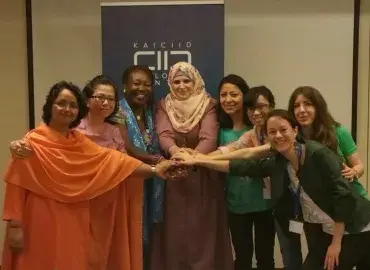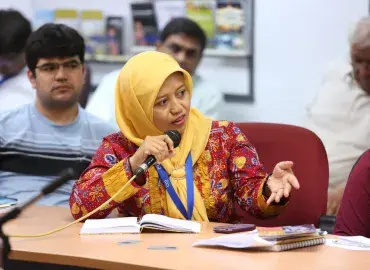The 2016 KAICIID International Fellows took part in their second training from 12-16 May in Colombo, Sri Lanka, where they received advanced interreligious dialogue training, took part in visits to local houses of worship and planned their individual Fellows projects. The training is part of a year-long programme that will equip the Fellows to be active interreligious practitioners and give them the tools to teach their students how to conduct their own dialogues. Visits to local houses of worship are a key part of the training and the religious sites included Colombo’s Red Mosque, the Old Kathiresan Hindu Kovil, St. Lawrence Church and the Bellanwila Buddhist Temple.
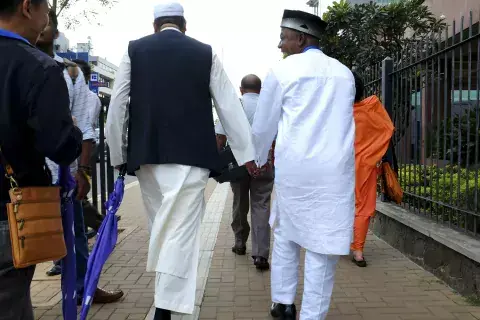
Two Fellows, a Muslim and a Christian walk together in Colombo during the tour. Religious sites visits are a key part of fostering interreligious understanding and mutual respect, and many Fellows will incorporate visits in their own dialogue projects. The visits were a first-time experience for many of the Fellows, and they not only learned about the religious sites, but also acquired a new appreciation for the houses of worship of the other Fellows.
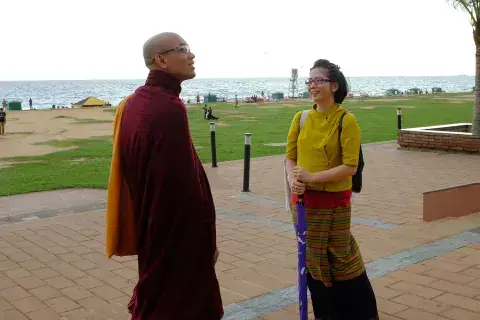
"The visits made me understand how joyful, safe and profoundly the other Fellows can be affected when visiting. Welcoming others is my responsibility, not only because I am a Buddhist, but because I want to be with friends of other faiths and for them to get what they really need to learn about other faiths." - Nang Loung Hom

The Fellows look on during the tour of the Historic Red Mosque of Colombo, the first stop on the tour.
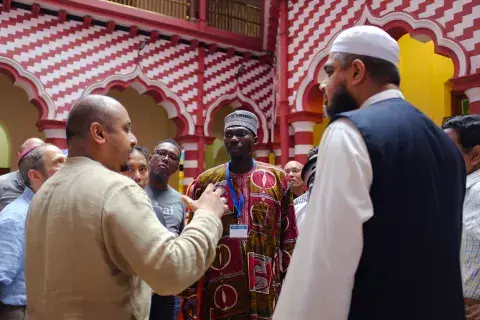
The Red Mosque is one of the oldest mosques in Colombo, built in the early 20th century. During the tour, some of the Fellows shared traditions from their own houses of worship, answered questions and explained the customs they could observe during the visit.
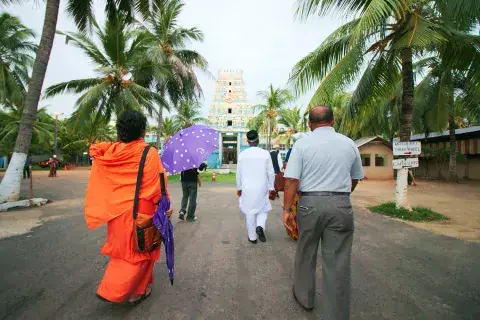
The Fellows visited the Old Kathiresan Hindu Kovil of Colombo. Like many Hindu temples, the roof of the building is richly adorned as is customary in the Hindu tradition.
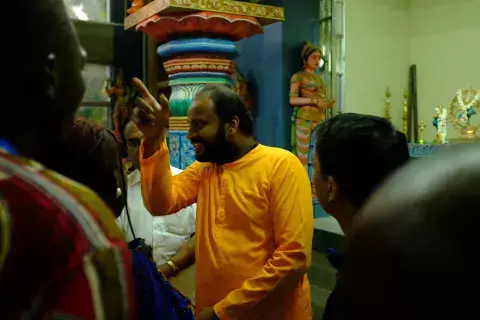
The tour of the Kovil, as they are called in Tamil because of their distinct architecture, was conducted by Jagrat Chaitanya, a Hindu monk who is a member of the 2016 Fellows class.
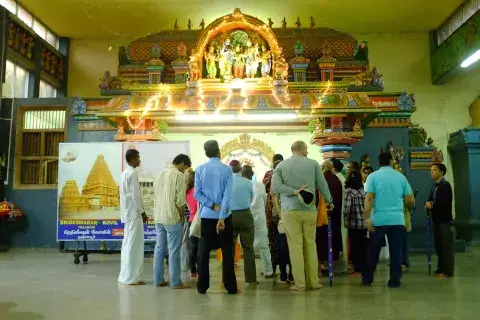
“People who are involved in a house of worship feel a sense of sanctity. That sanctity is what is perceived by us to be an experience with the divine. We go there because we are seeking some form of refreshment or retreat so we can remind ourselves that we’re sacred beings, and not just the people we are pressured to be in our everyday realities. There’s something special about finding that moment of sanctity in a holy space and being able to share that with someone else. There must be something that brings us together instead of separates us.” - Jeff Berger
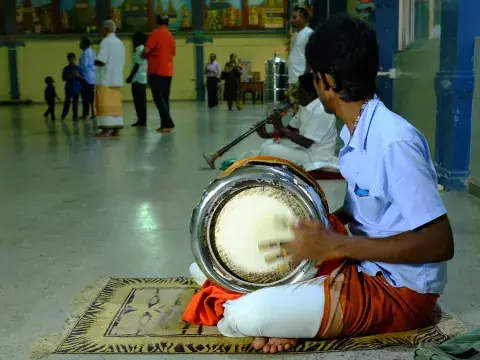
During the visit, the Fellows had the opportunity to observe a ceremony that featured offerings in the form of music.
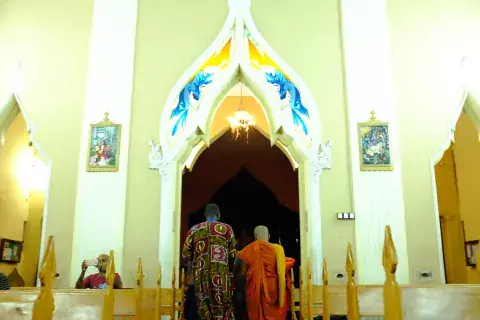
The tour also included a visit to St. Lawrence Church, a Roman Catholic church in Colombo.

The Church was consecrated in 1968 and is dedicated to St. Lawrence, the Patron saint of the city of Colombo.

"It was good for us to embody respect for the various traditions and forms of worship and to recognise all forms of worship as valid. We may not understand them, but we should have respect for the traditions and promote mutual respect and religious freedom." - Swamini Brahmaprajnananda Saraswati

The final stop on the tour was the Bellanwila Buddhist Temple. The tour was led by Galkande Dhammananda Thero, a graduate of the first Fellows course. Dhammananda is a Buddhist monk working in peacebuilding and reconciliation in Colombo.
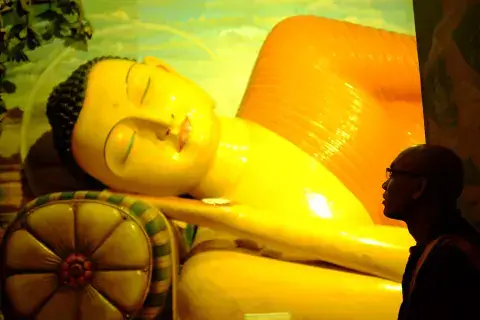
The Venerable Acinna, a member of KIFP 2016, looks on while the tour passes the Reclining Buddha. Painted on the walls of the temple are images from Buddhist scripture that serve as educational material for young Buddhists.

The Fellows removed their shoes out of respect during some of the visits. This is common practice in many houses of worship and is done out of respect and reverence for the sanctity of the temple or mosque.
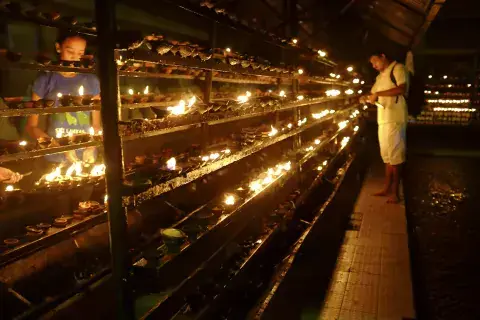
A man lights a candle in prayer. The tour concluded with quiet reflection in the garden of the temple complex under a sapling from the Bodhi tree, the tree under which the Buddha sat when he reached enlightenment.
"The experiences we had in the houses of worship let us know that it is really about worship and humanity. We really need too look at it from that perspective and think about what we do for humanity and how religious leaders can come together and realise that this is not something to create crisis about. It’s about what people believe in and how they represent it in the form of worship and humbling themselves." - Justina Mike
The 2016 KAICIID international Fellows concluded their…
The International Dialogue Centre (KAICIID) is seeking applications from education professionals working in institutions that…


